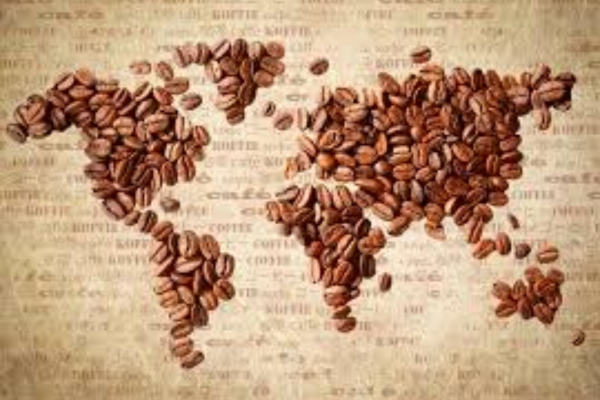
Coffee is more than just a beverage; it’s a global force that has influenced cultures, economies, and societies for centuries. The simple act of brewing and drinking coffee transcends geography, language, and lifestyle. It has sparked revolutions, inspired intellectual movements, and built social connections. From the coffeehouses of the Ottoman Empire to the modern café culture of the 21st century, coffee’s impact on the world has been profound and far-reaching.
This cultural journey through coffee’s history explores how this humble bean has shaped global trends, traditions, and innovations. By understanding coffee’s influence, we gain deeper insight into its role in connecting people, shaping economies, and inspiring progress.
The Early Days: Coffee’s Journey from Ethiopia to Arabia
The story of coffee begins in Ethiopia around the 9th century, where legend tells of a goat herder named Kaldi who discovered the energizing effects of coffee cherries. While the exact origins remain shrouded in myth, Ethiopia’s role as the birthplace of coffee is widely accepted.
The practice of brewing coffee as a drink, however, began in Yemen. By the 15th century, Yemeni traders and Sufi mystics cultivated coffee and used it to enhance their nocturnal prayers. The port city of Mocha became synonymous with coffee trade, and the drink was known as “qahwa,” meaning “that which prevents sleep.”
The significance of coffee in the Arab world extended beyond its stimulating properties. Coffeehouses, or “qahveh khaneh,” became vital social centers where people gathered to discuss news, politics, and religion. These coffeehouses laid the groundwork for future societal structures where coffee would serve as a catalyst for dialogue and change.
Coffee and the Ottoman Empire: The Rise of the Coffeehouse
By the 16th century, coffee had reached the Ottoman Empire, where it quickly integrated into daily life. The first recorded coffeehouses in Istanbul (then Constantinople) appeared during the reign of Sultan Suleiman the Magnificent. These coffeehouses were far more than places to drink coffee—they were cultural and intellectual hubs.
In Ottoman coffeehouses, people from all walks of life gathered to play games, listen to storytellers, and debate current events. These establishments were known as the “Schools of the Wise” because of their role in fostering knowledge and discussion. Coffeehouses became places where ideas could be freely exchanged, a tradition that would influence other parts of the world.
However, coffee was not without controversy. Some Ottoman rulers feared that the gatherings in coffeehouses could lead to political dissent. Attempts to ban coffee were met with resistance, and coffee’s popularity only grew stronger. The resilience of coffee culture in the Ottoman Empire highlighted its deep significance in social life and public discourse.
Europe’s Love Affair with Coffee
Coffee arrived in Europe in the 17th century, carried by traders and travelers who had encountered it in the Middle East. The first European coffeehouse opened in Venice in 1645, and the trend quickly spread to cities like London, Paris, and Vienna.
In England, coffeehouses were known as “penny universities” because, for the price of a penny, patrons could buy a cup of coffee and engage in stimulating conversations. These coffeehouses attracted thinkers, writers, and politicians, and became centers of intellectual and commercial activity. Many important institutions, such as Lloyd’s of London and the London Stock Exchange, began as coffeehouse gatherings.
In France, coffee gained popularity through figures like King Louis XIV and writer Voltaire, who reportedly drank dozens of cups each day. French coffeehouses became crucial during the Enlightenment, serving as meeting places for philosophers like Jean-Jacques Rousseau and Denis Diderot.
In Austria, coffee culture flourished after the defeat of the Ottoman Empire at the Battle of Vienna in 1683. The city of Vienna is credited with the invention of adding milk and sugar to coffee, creating the foundations for modern café culture.
Coffee in the New World: Fueling Economies and Revolutions
Coffee’s introduction to the Americas in the 18th century coincided with the rise of colonization and global trade. European colonists brought coffee plants to regions like the Caribbean, Central America, and South America, where the climate was ideal for coffee cultivation. Countries such as Brazil, Colombia, and Costa Rica became major coffee producers, shaping the economic landscape of the region.
In the United States, coffee gained popularity during the American Revolution. When tea became associated with British oppression, American colonists adopted coffee as a patriotic alternative. The Boston Tea Party of 1773 symbolized a rejection of British tea taxes, and coffee became the drink of choice for those supporting the revolution.
Coffeehouses in the New World continued the tradition of social and intellectual gatherings. In the 19th century, they played an important role in fostering political debate, business dealings, and cultural exchange.
The Industrial Revolution and Coffee Innovation
The Industrial Revolution in the 19th century brought significant advancements to coffee production and consumption. Innovations like the coffee percolator (invented in 1819) and the espresso machine (patented in 1901) made coffee brewing faster and more convenient. These inventions allowed coffee to become more accessible to the working class.
The rise of coffee brands like Folgers and Maxwell House in the United States brought coffee into homes on a larger scale. The invention of instant coffee by Satori Kato in 1901 further revolutionized coffee consumption, making it possible to prepare coffee quickly and easily.
During this period, coffeehouses evolved into places where workers, students, and professionals could gather for a quick break or a social meeting. Coffee became a symbol of productivity and energy, fueling the growing urban workforce.
Modern Coffee Culture: Globalization and Third Wave Coffee
In the 20th and 21st centuries, coffee culture has become a global phenomenon. The rise of international coffee chains like Starbucks transformed coffee into a lifestyle product. Coffeehouses have become spaces for work, leisure, and community, reflecting the dynamic nature of modern life.
The Third Wave Coffee Movement emphasizes quality, sustainability, and artisanal craftsmanship. This movement focuses on single-origin beans, ethical sourcing, and precision brewing methods like pour-over and cold brew. Coffee drinkers have become more interested in the origins of their coffee, the farmers who grow it, and the environmental impact of coffee production.
Specialty coffee shops now dot cities worldwide, offering unique brewing methods and fostering a deeper appreciation for coffee as a craft. Social media platforms like Instagram and TikTok have further popularized coffee culture, with trends like latte art, Dalgona coffee, and home brewing becoming viral sensations.
Conclusion
From its mythical discovery in Ethiopia to the globalized café culture of today, coffee has shaped the world in remarkable ways. It has fueled revolutions, inspired intellectual movements, and fostered social connections across cultures and generations. The coffee bean’s journey reflects humanity’s ongoing quest for connection, innovation, and creativity.
As you sip your next cup of coffee, remember that you are participating in a tradition that has spanned centuries and continents. Coffee is more than just a drink—it is a cultural journey that continues to evolve, bringing people together and shaping the world in ways both big and small.
Here’s to the enduring power of coffee—our shared, global experience in a cup.
Enjoy your brew! ☕
